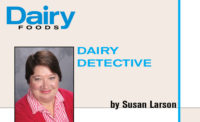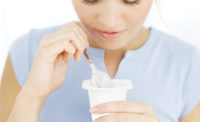Clean label, commonly defined as a short list of identifiable, more natural ingredients, has been trending upward for years. Food and beverage manufacturers have been constantly working to keep up with these new “free from” trends happening around the globe. Health and wellness goals are closely correlated to product packaging claims, and in recent years, we have seen a shift toward something larger than the absence of additives.
Ingredient-, process- and sourcing-related claims are emerging as consumer interest in how food and beverages are made grows. Consumers want to know the exact ingredients used and where those ingredients came from. This causes brands to be more transparent, finding ways to reformulate and restructure their communication strategies, thus evolving clean label from a trend to an expectation.
Research shows recognizing most words within an ingredient list is important to consumers. According to Innova Market Insights, The Netherlands, 73% of U.S. consumers agree it is important that ingredients on a food label are known entities and would be used at home, and 34% claim to always/usually look for products formulated with fewer ingredients.
It is also reported that consumers do in fact read ingredient lists before making purchases. A quarter of U.S. consumers claim to read the nutritional and ingredient label of food products, according to Innova. Now that many consumers spend more time observing foods and beverages labels and ingredient legends, manufacturers are challenged to simplify claims and ingredient lists to create cleaner, more natural products.
Simplicity of dairy
The United States is offering food and beverage manufacturers around the globe the opportunity to formulate a clean label with U.S. dairy ingredients. This vast portfolio of ingredients is derived from milk, one of the cleanest ingredients sold today. Consumers see products close to nature as healthier, and many dairy products were originally used in a variety of applications because of their simplicity and nutrition.
Milk contributes a wide range of nutrients, such as carbohydrates, proteins, fats and minerals (calcium and potassium), and contains no additives other than vitamins A and D. In pasteurized form, milk is minimally processed, helping maintain its naturalness. As technology advanced, using milk as an ingredient became easier, allowing for new ingredients with various functions to be added to the dairy ingredient portfolio.
“Like milk, dairy ingredients, such as nonfat dry milk, cheese, whey proteins, milk proteins and permeate, are made through simple filtration processes that are considered physical separations,” said K.J. Burrington, dairy ingredient applications coordinator for the Wisconsin Center for Dairy Research. “This means dairy ingredients can be classified as clean label by most consumers.”
Dairy ingredients have high nutritional value. Casein proteins and whey proteins are rich in essential amino acids, and whey proteins contain the highest branched chain amino acids: leucine, isoleucine and valine. Fat also is a necessary part of the daily diet, and milkfat supplies essential vitamins (A, D, E and K), minerals and fatty acids to the body.
Using dairy for clean labels
As explained in detail in a recently completed technical report titled “Dairy Solutions for Clean-Label Applications,” dairy ingredients are ideal for numerous foods and beverages, and are effective substitutes for hydrogenated fats, chemical emulsifiers or less clean label-friendly carbohydrates in bakery products, beverages, dairy products, desserts, soups, sauces and prepared dinners.
For decades, dry milk and whey products have been used in the baking industry for a variety of functional purposes. These benefits, which include browning, water binding and fat replacement, are applicable to many bakery applications, including the U.S. Dairy Export Council (USDEC) Breakfast Bites prototype found on ThinkUSAdairy.org. This formulation includes numerous dairy ingredients, including nonfat dry milk powder and whey protein concentrate.
Milk, and the variety of dairy ingredients derived from it, continues to be an integral ingredient in many modern-day, clean-label beverages. As the original clean-label beverage, milk is an important component in many USDEC prototypes, including the Honey Lavender Soothie, a warm, soothing beverage that’s an excellent source of both calcium and protein.
Prepared dinners, sauces and soups often are high in sodium, and typical sodium substitutes are not clean label-friendly. Whey permeate, or dairy product solids, is an ideal substitute, as it maintains salty characteristics while reducing sodium levels. One example is USDEC’s Sweet and Savory Butternut Squash soup, which contains 32% less sodium than a comparable soup made with higher levels of salt.
These examples are just a small sampling of the many formulations that can legitimately make a clean-label claim thanks to U.S. dairy ingredients. By using these ingredients, food and beverage manufacturers can create clean-label products that will instill confidence in health-conscious consumers. To formulate products with fewer, more natural ingredients, formulators can trust U.S. dairy for a diverse group of highly functional, flavorful and nutritious ingredients.
Visit ThinkUSAdairy.org for the recipes mentioned above and for more information on how U.S. dairy ingredients can be used to achieve clean labels.




